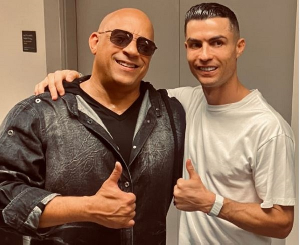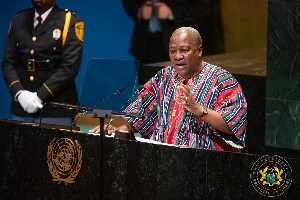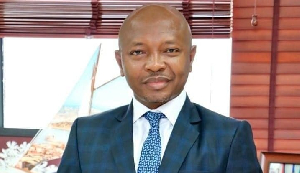Ms Linda Ajwolemdaga, a 20-year-old hearing impaired student at Saint John’s Integrated Senior High/Technical School, is very attentive in class, but always having challenges trying to grasp mathematical concepts.
Concept
While classes are in session, there is a sign language interpreter, standing alongside the teacher in the classroom, interpreting in sign language, what is being taught.
However, the sign language interpreter is unable to keep pace with the teacher because sign language interpretation is slow. Ms Ajwolemdaga, who is a form three student studying Home Economics, therefore, misses some of the explanations of the teacher and finds it difficult to fully grasp the subject.
Ms Ajwolemdaga says as a hearing-impaired student, she “hears with eyes and talks with hands” but it is not everything that the teacher says that is written on the board, therefore, she misses a lot of explanations.
She says some subjects such as physics are technical adding that some of the concepts are not easily signed for her to get instant explanations. She says the school does not have the full complement of sign language interpreters.
In view of this, the few that are available work throughout the day and sometimes get tired along the way, which affects their delivery.
Ms Ajwolemdaga says the school does not have adequate teaching and learning materials, and laboratories to encourage practical lessons, which are easily understandable to her.
Given the circumstances, she said she had to put in extra effort after classes by studying during the evening to catch up with her classmates, who are not hearing impaired although she does that without an interpreter since the school does not have accommodation for them.
She, therefore, depends on some of her classmates, who try to use sign language to explain lessons to her.
Ms Ajwolemdaga’s experience summarises the situation that 30 other hearing impaired students of St John’s Integrated Senior High/Technical School face as they mix with students without hearing impairment to study various courses including; General Arts, Agricultural Science, Technical and Business.
State of Inclusive Education at St John’s Integrated Senior High/Technical School
Saint John’s Integrated Senior High/Technical School, located at Navrongo in the Kassena/Nankana Municipality of the Upper East Region, was established in 2006.
It is the only second cycle school in the country, where hearing impaired students and those without hearing impairment are admitted, and they study together in class, and write the same examinations.
It was established as part of government’s strategy to promote inclusive education through community integration of students with special education needs (hearing impairment) and those without hearing impairment.
The school’s current population stands at 723, out of which 31 are hearing impaired. The school, in view of the courses it offers, holds 16 classes in a day starting from 0700 hours to 1500 hours. Each class session requires two sign language interpreters to ensure effective interpretation of what the teacher is teaching to the students with hearing impairment.
This means the school needs 32 sign language interpreters as full-time staff members for effective teaching and learning. However, it currently has eight sign language interpreters, who are full-time staff members and additional four, who are volunteers and therefore, not remunerated.
What does Ghana’s Inclusive Education policy say?
The government in 2015, through support from development partners, developed the Inclusive Education policy to be implemented within a five-year period. This policy is based on the value system, which holds that “All persons, who attend an educational institution are entitled to equitable access to quality teaching and learning, and which transcends the idea of physical location, but incorporates the basic values that promote participation, friendship, and interaction.”
The policy confirms “Government’s pronouncements in the 1992 Constitution to ensure that every Ghanaian is afforded equitable opportunity in terms of access to quality education.” One of the objectives of the policy is “To promote the development of a well-informed and trained human resource cadre for the quality delivery of inclusive education throughout Ghana.”
The Ministry of Education (MoE), in 2015, also developed Standards and Guidelines for Practice of Inclusive Education in Ghana, which states that “Teachers should provide additional time for learners with special education needs to complete learning activities/tasks and assignment.”
Again, the MoE developed Implementation Plan 2015 – 2019 for the Inclusive Education policy, which states that within year two of the policy, there should be provision of requisite “Teaching and learning materials to assist children/pupils with special education needs.”
The government has also committed to implementing measures to ensure the attainment of the Sustainable Development Goals (4), which targets quality basic and secondary education for all.
Real objectives of the policy
The objectives of this policy, its guidelines and implementation plan and the country’s commitment under international conventions adequately capture the ideal situation to promote quality inclusive education in the country to ensure that no one is left behind in terms of access to quality education.
However, the situation at Saint John’s Integrated Senior High/Technical School clearly shows that not much is being done to implement the policy in the areas of recruitment of adequate professional sign language interpreters and provision of teaching and learning materials, and laboratories to ensure quality inclusive education especially for the hearing impaired students.
Appeals for more sign language interpreters
There is pressure in terms of workload on the few sign language interpreters at the school. This results in fatigue that affects the quality of their delivery. The need to recruit additional sign language interpreters to augment the staff strength of the school to ease pressure on the existing ones cannot be overemphasised.
Mr Stephen Akuba, Headmaster of Saint John’s Integrated Senior High/Technical School said the few sign language interpreters at the school were doing their best to promote quality inclusive education appealing to government to recruit more sign language interpreters for the school to ease pressure on the few currently in the system.
Mr Akuba suggested that priority is given to the four volunteer sign language interpreters in terms of absorbing them to teach at the school when financial clearance is given for recruitment.
Mr Atawulai Fuseini, Member of the Association of Professional Sign Language Interpreters said a number of sign language interpreters in the country was not gainfully employed urging the government to employ them to help the hearing impaired students of Saint John’s Integrated Senior High/Technical School.
Mr Fuseini, who is also a former sign language interpreter at the school, said the situation where one sign language interpreter “interprets all day at the school is not effective for sound academic exercise” adding there was need for each subject teacher to have his or her own sign language interpreter to plan lessons together to ensure effective teaching and learning.
Madam Amina Achiaa, Director of Special Education and Inclusion Division of the Ghana Education Service said in-service training was held for teachers to hone their skills in inclusive education to deliver quality education for pupils and students with special education needs.
Madam Achiaa recognised the need for more professional special education teachers saying she had recommended a number of them to the MoE for recruitment expressing hope that they would soon be recruited to augment the existing numbers to promote quality inclusive education in the country.
The way forward
People living with Disabilities (PWDs) face some form of marginalisation and vulnerability in the country making some not to attend school.
It is, therefore, gratifying that some PWDs such as; the hearing impaired have taken a bold step to acquire secondary education.
All necessary efforts must be made to make the school environment conducive for the hearing impaired students of Saint John’s Integrated Senior High/Technical School to ensure equitable access to quality education to ensure that they realise their full potentials.
As the implementation of the country’s Inclusive Education policy comes to an end next year, there is an urgent need for the government to take steps to ensure that the hearing-impaired students of Saint John’s Integrated Senior High/Technical School realised the full benefits of the policy.
In this regard, government must recruit the full complement of sign language interpreters for the school as well as adequately resource it with teaching and learning materials and laboratories to enhance quality inclusive education.
Government should also construct accommodation facilities for sign language interpreters of the school for them to be available at all times to support the hearing-impaired students to undertake their various assignments and tasks.
This will not only affirm the government’s commitment to ensuring that no one is left out in terms of access to quality education, but also promote quality inclusive education to improve education outcomes of the hearing-impaired students.
This is crucial to the country’s quest to attain the SDGs (4), which targets to promote quality education for all.
General News of Thursday, 11 April 2019
Source: ghananewsagency.org













